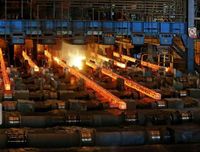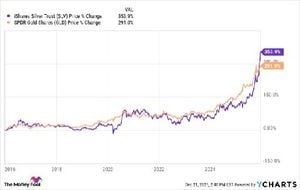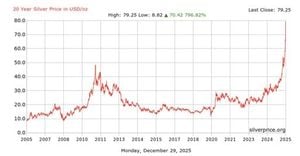Iran’s industrial sector has delivered a string of striking export and production successes in 2025, with the nation’s tractor and steel industries both reporting robust growth and expanding international reach, even as certain challenges linger under the surface. According to WANA News Agency, Iran Tractor Manufacturing Company (ITMCO) has doubled its annual output, while the steel sector, per the Iranian Steel Producers Association, has posted nearly $3 billion in exports in just five months—a 10 percent increase over last year’s pace.
At a ceremony in Tabriz on September 20, Mostafa Vahidzadeh, CEO of Iran Tractor Manufacturing, shared the latest achievements of the company with evident pride. "Tractor production has risen from 21,000 to 40,000 units," he announced, crediting the surge to the dedication of ITMCO’s employees and ongoing modernization efforts. The company’s tractors now find buyers in more than 25 countries, with export revenues surpassing $61 million. These numbers, Vahidzadeh emphasized, are not just statistics—they reflect a deliberate strategy to weather Iran’s economic and industrial headwinds.
Key to this resilience is ITMCO’s “50-50 Strategy,” launched four years ago as a blueprint for long-term stability during turbulent times. This plan, Vahidzadeh explained, has helped the company align its marketing and production with actual customer demand, sidestepping the sort of supply chain disruptions that have plagued other manufacturers in the region. The CEO was quick to point out that nearly $100 million has been invested in growth, development projects, and the modernization of machinery across all ITMCO subsidiaries. "Very soon, we will share good news about development plans and new production lines abroad," he teased, hinting at a future of even broader international engagement.
Indeed, the company’s global ambitions are already taking shape. Five international teams are currently stationed in Tabriz, working on joint cooperation projects with ITMCO. While details remain under wraps, the presence of these teams underscores Iran’s efforts to deepen industrial ties beyond its borders, even as the country navigates persistent economic sanctions and shifting global alliances.
Recognition for these achievements extended beyond the boardroom. At the close of the ceremony, several ITMCO subsidiaries were honored for their standout performance. Motorsazan Company was named the top performer in a comprehensive evaluation system, the after-sales service division was recognized as a leader in growth, the Urmia subsidiary received accolades for its implementation of 5S standards (a set of workplace organization principles), and the Kurdistan subsidiary was acknowledged for excellence in management. Employees from all four companies received awards from the group’s CEO, a gesture that Vahidzadeh said was meant to "highlight the dedication and innovation that drive our success."
While tractors may not always steal the headlines, their rising export numbers are emblematic of a broader trend in Iranian industry. Nowhere is this more evident than in the steel sector, which has also notched up impressive gains despite some sector-specific hurdles. According to the Iranian Steel Producers Association, Iran’s steel industry posted nearly $3 billion in exports during the first five months of 2025—a 10 percent increase over the same period in 2024. The total volume of iron and steel exports rose by 17 percent, reaching 796,000 tons and reversing a decline that had been seen in the first quarter of the year.
But the steel story is not without its complications. The surge in iron ore concentrate exports—up 80 percent year-on-year—has sparked concern among domestic steelmakers about the risk of reduced supply for local production. As exports of this key raw material ramp up, some industry voices worry that domestic steel plants could face shortages or higher input costs down the line. It’s a delicate balancing act: while foreign currency revenues are crucial for Iran’s economy, over-exporting raw materials can undermine the very industries that drive that growth.
The situation is further complicated by diverging trends within the steel sector itself. Exports of long steel products, particularly rebar, have taken a sharp hit. Rebar, which accounted for more than 85 percent of long product exports last year, saw its export volumes drop by 31 percent over the five-month period. Analysts suggest that a combination of shifting global demand, price pressures, and competition from other suppliers may be to blame.
Yet there are bright spots. Mobarakeh Steel Group companies, including the flagship plant and Chaharmahal and Bakhtiari Automotive Sheet, have adopted a more aggressive export strategy focused on flat steel products. This pivot has paid off, boosting foreign currency revenues by $122 million from flat steel exports alone and pushing their total exports to $216 million over the same five months. According to Tehran Times, this shift reflects a nimble approach to changing market conditions, as well as a willingness to invest in product lines with higher value-added potential.
In the context of Iran’s broader economic picture, these industrial successes offer a measure of optimism. Both the tractor and steel industries are capital-intensive, export-oriented, and deeply intertwined with global markets. Their ability to grow, diversify, and adapt is seen by some analysts as evidence that Iranian manufacturing can remain competitive—even when faced with formidable challenges at home and abroad.
Of course, the path forward is not without uncertainty. The ongoing risk of supply shortages in the steel sector, the need to sustain export momentum, and the ever-present specter of international sanctions all loom large. For ITMCO, the promise of new production lines abroad and deeper international cooperation could open fresh opportunities, but will also require careful navigation of complex geopolitical realities.
Still, for now, the numbers speak for themselves. Whether it’s tractors rolling off assembly lines in Tabriz or steel slabs making their way to ports around the world, Iran’s industrial sector is proving that, with the right mix of strategy, investment, and adaptability, growth is possible—even in the most challenging of times.
As the lights dimmed on the ceremony in Tabriz and the latest export figures flashed across industry dashboards, one thing was clear: Iran’s manufacturers are not waiting for perfect conditions. They’re forging ahead, one unit—and one ton—at a time.




